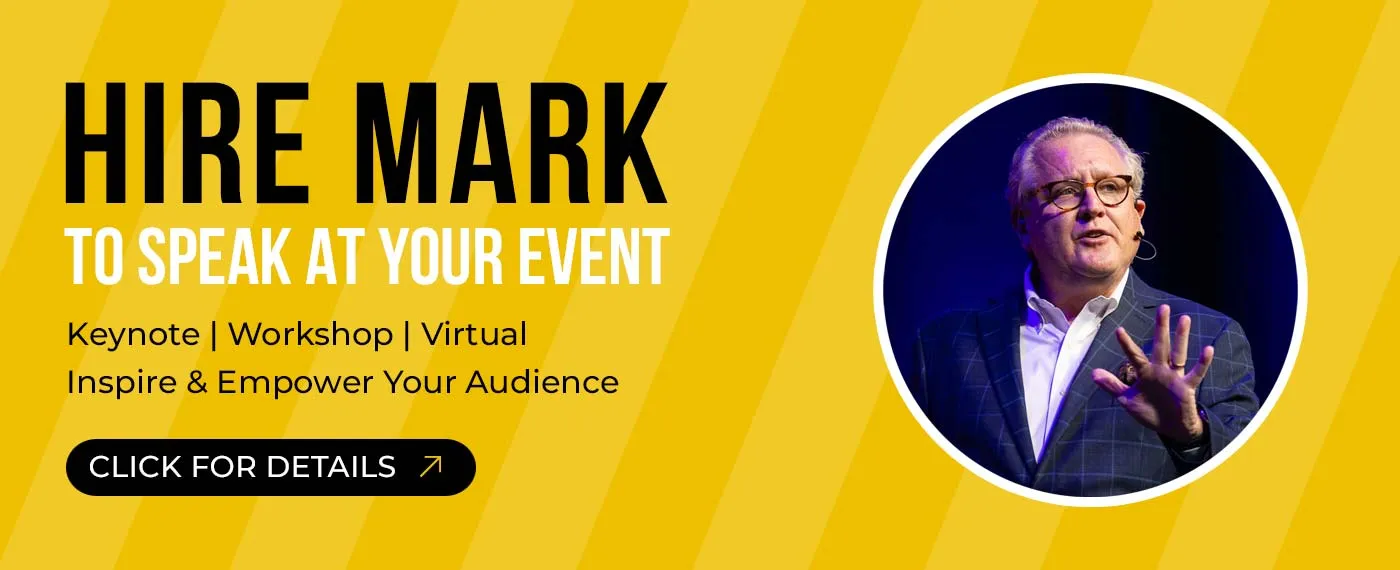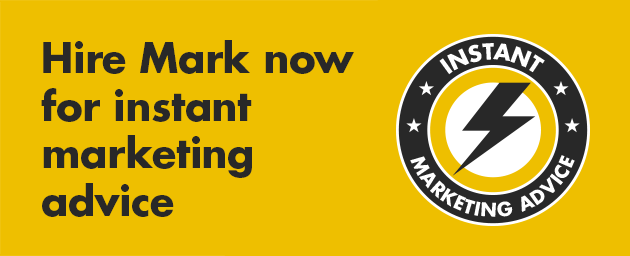
My new book is called Audacious: How Humans Win in an AI Marketing World. It’s a call to action for those who refuse to be left behind, as AI infringes on our work and our careers.
I knew the book itself had to demonstrate the norm-bending path I outlined in the book … but how? The publishing industry is so boring, built on processes that have existed for more than 200 years. There’s not a lot of room for breaking rules in a business like that.
But I did it. The cover of Audacious is a first-in-the-world AI-driven Augmented Reality experience — a book cover that’s never the same twice. Some have compared the cover to an art show or a video game. Click the video to see what it looks like:
This is the story of the “infinity cover” and how the most audacious book cover in history came to life.
The Spoonshot
Over the years, I’ve developed an admiration, and then a friendship, with the founders of Giant Spoon, a marketing agency recently named by Fast Company as one of the most creative companies in the world. Their quirky, norm-busting approach has won them award after award, and of course, that’s fascinating to a marketing geek like me.
I first mentioned Giant Spoon in my book Marketing Rebellion when I described the new momentum toward experiential marketing — a characteristic of much of their work. One of their activations was actually the catalytic idea that started me down the path for Audacious!
I knew I had to knock this new book out of the park. I was confident in my research and writing (my best work!), but I needed to create an experience that would push the boundaries of what a book could be. When I mentioned this to Marc Simons, a Giant Spoon co-founder, he said, “We can help.”
We were about to get a little crazy and launch what the agency calls a “Spoonshot.”
The creative process
It was a lot of fun going through the brainstorming process with Giant Spoon. Early ideas involved my naked body (the world is not ready for that one) and a pen that literally contained a sample of my sweat and blood (representing the work that went into the book).
The idea that rose to the top was an extreme version of the book — something that nobody had seen before. So we scoured the world for ideas and focused on an embossed leather cover. That proved to be far too expensive, and as we explored other techniques like foil embossing, we couldn’t find any idea that was an “oh wow” for a reasonable price.
I wasn’t against spending money, but the margin on book sales is so low so I had to watch the budget. One of the lessons in Audacious is that a big budget can hinder creativity. So we rolled up our sleeves and pursued new concepts.
I had the idea of creating a provocative book cover with nothing but a QR code — but where would the QR code lead?
The original Giant Spoon idea was that it would open a portal to another world populated by the stories and characters of the book — a quest. But this was also going to be complicated and costly.
And then, Giant Spoon Creative Director Ian Grody tossed out an idea that made my heart skip a beat. What if the cover kept changing? What if the book was never the same way twice?
If we could pull that off, we would achieve something that had never been done before! We had our path — on a reasonable budget!
The AI activated book
I did some tests to see how a QR code could be used in various circumstances. Would it work if it was as small as a thumbnail on Amazon? If it was presented on an angle? Would it even be legal within Amazon guidelines for me to publish a cover that was nothing but a QR code?
I determined that it could theoretically work and now we had to figure out HOW! This had never been done before, and it required ingenuity and determination.
Our concept was to upload the completed manuscript into an AI large language model and generate art based on stories in the book. The AI was also “fed” sample art to help us attain a unique, consistent output of abstract images.
It worked — sort of. The early versions were far too abstract and weird!


We learned that we needed to be more descriptive with our prompts for the AI to create something that resembled something from the book. The final results are still abstract but more connected to the stories in the book. You might even see abstract art of me on the cover!

The biggest technical challenge was linking the art to the QR code in a seamless reader experience. The Giant Spoon team found a creative solution — design a custom Snapchat filter that led to the AR experience. This was a breakthrough idea because it didn’t require any special download or passcode for the reader. Just point your smartphone camera at the cover, click to approve the experience, and go!
After a few months of work, we had a system in place!
The cover design
Now that we had an AI activated AR experience, we had to design the actual cover. It had to have a background with enough contrast to accurately display the code and bold enough to stand out as a small thumbnail image on Amazon.
Here’s an early version:
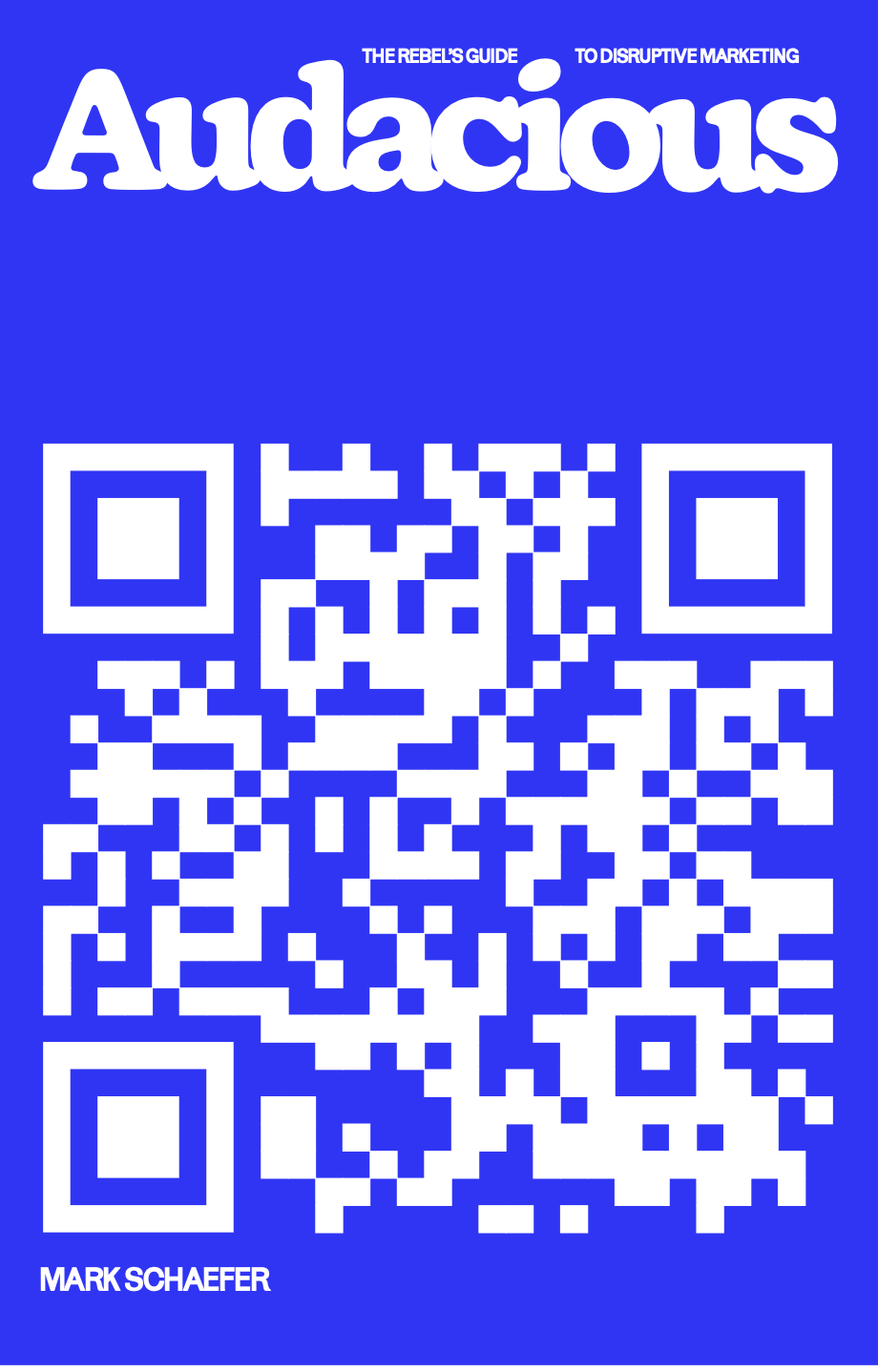
I loved the bold blue design, but it was inconsistent with the color palette of the abstract art in the AR experience. We wanted the cover-to-AR experience to seem seamless. We tried a lot of crazy combinations, including a photo of a plaster wall I took while visiting Italy:
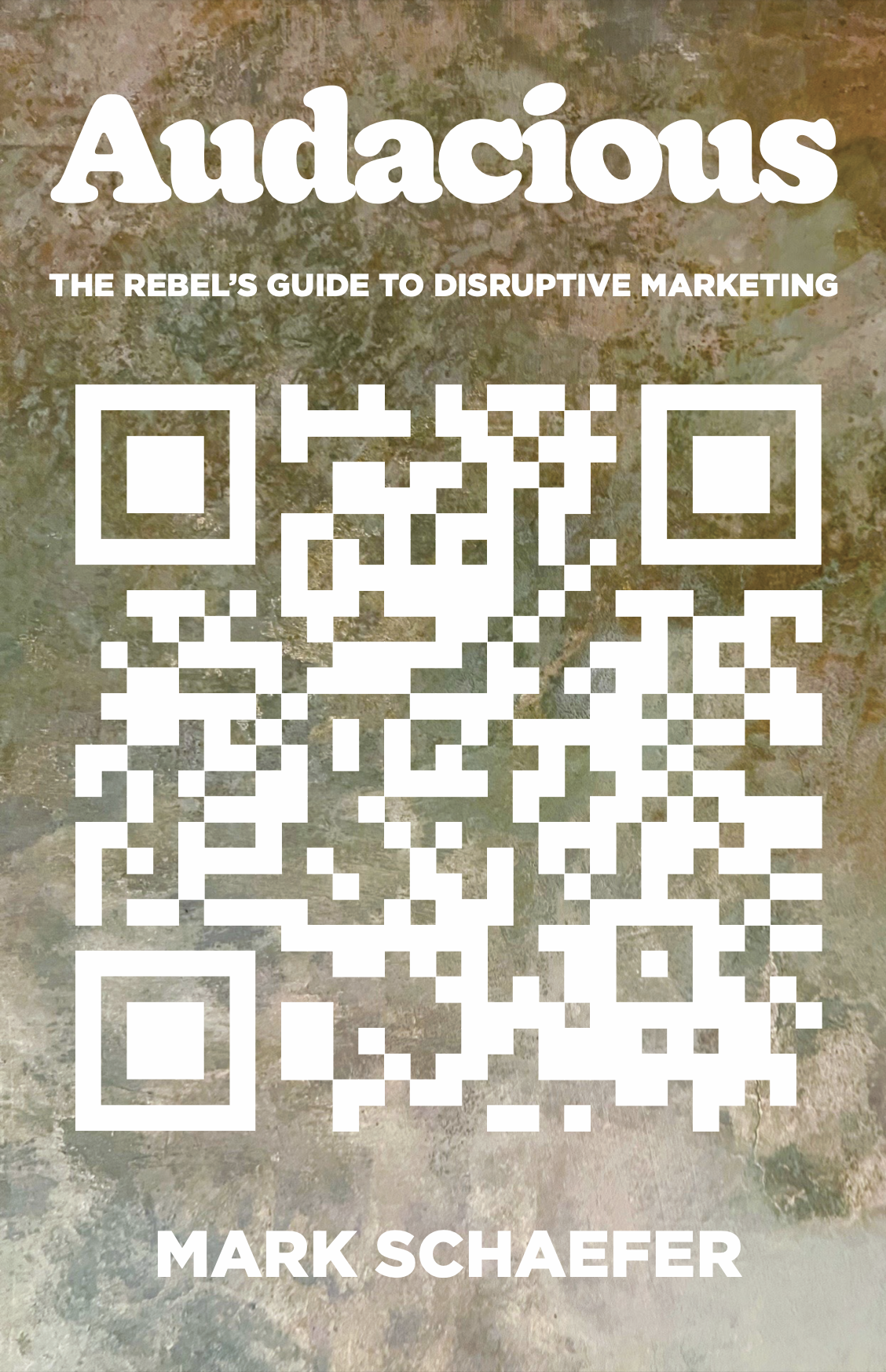
I actually liked this idea … there was a story behind the cover art! But it was too pale to make the QR code stand out. We needed something bolder. I took a photo of a cool color pattern in an architectural magazine and asked the designer to see how it would look as a cover. We were getting close:
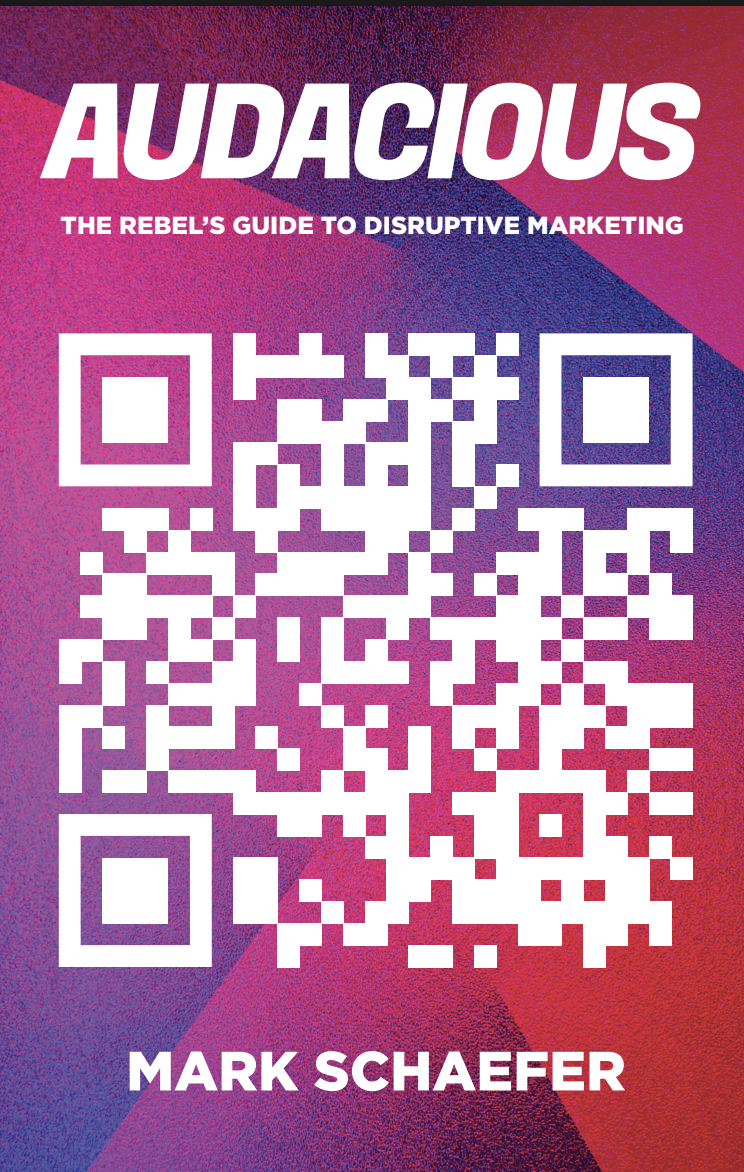
This is a great cover and it really popped. But there was one more iteration. Giant Spoon finalized the morphing AI images and suggested a more subtle gradient design that mimicked the tone of the new abstract art:
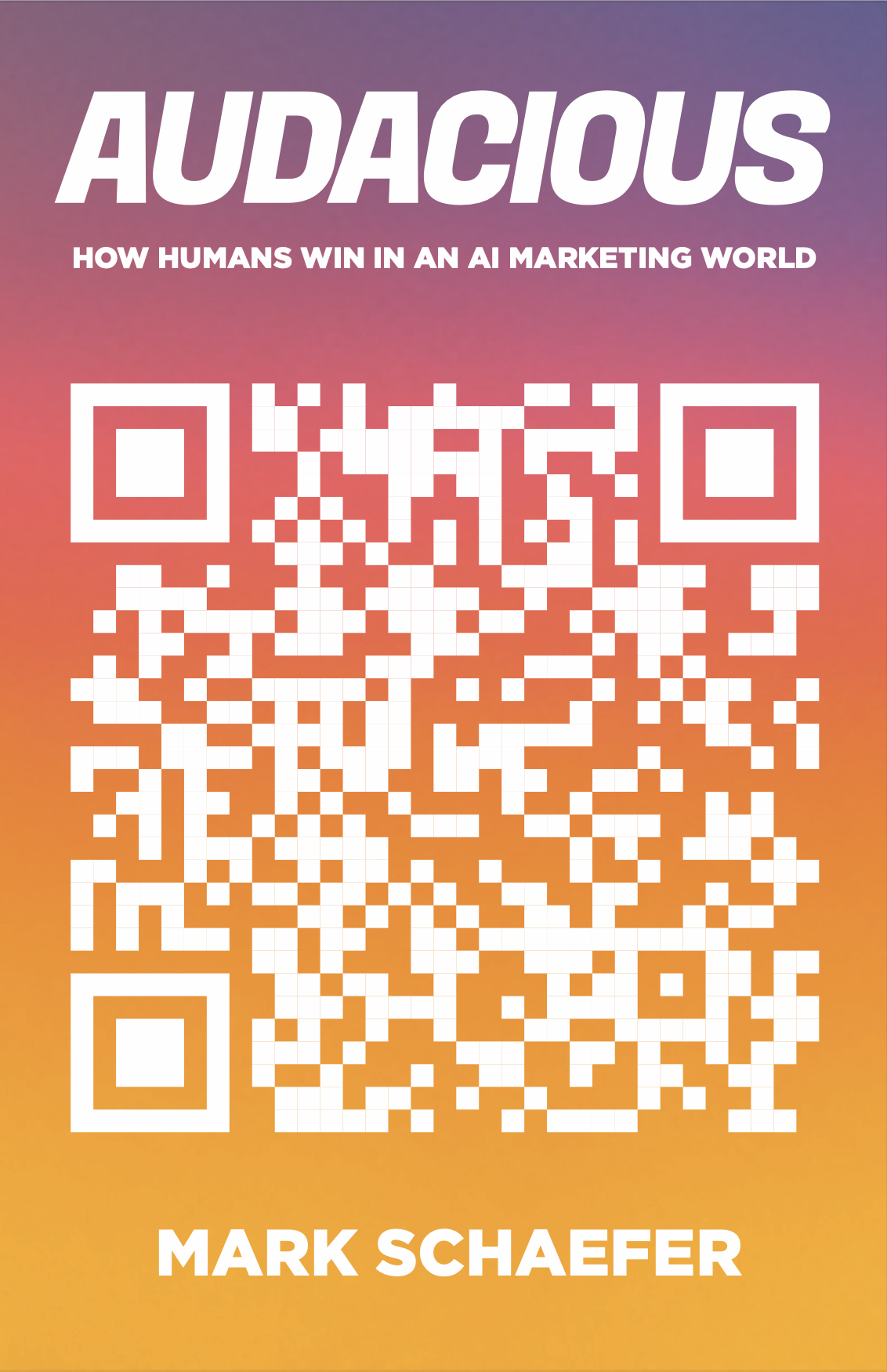
Voila! This is the final version, and it has the working QR code, so go ahead and give it a try if you haven’t purchased the book yet!
There was one other significant change to this cover: The subtitle. Some of the beta readers (people who provide feedback on the book before it is finalized) didn’t like the original subtitle, “The Rebel’s Guide to Disruptive Marketing.” They didn’t think it encompassed the bold promise of the book.
I kept thinking about one of the lines in the book — “This is a rallying cry for those who refuse to be ignored.” That’s the spirit I wanted to capture. We all need to rally and find a way forward in a world where the bots are creeping in on us. So I landed on: “How Humans Win in an AI Marketing World.”
Beyond the AI activated cover
In addition to the standard AR cover, I also created AR experiences for:
- An alternative cover for ads where the QR code leads to the promotional video instead of the art
- A unique AR experience that aligns with the square audiobook cover
- Custom AR experiences for foreign publishers.
As you see, the cover took months of work and innovation. Some times it was nerve-wracking as we pioneered a new concept. But the cover is just the beginning of the book’s surprises. You’ll also find a puzzle within the book, QR codes leading to case study videos, and “Easter egg” surprises.
I hope you’ll buy my book and experience this unique work first-hand!
 Need a keynote speaker? Mark Schaefer is the most trusted voice in marketing. Your conference guests will buzz about his insights long after your event! Mark is the author of some of the world’s bestselling marketing books, a college educator, and an advisor to many of the world’s largest brands. Contact Mark to have him bring a fun, meaningful, and memorable presentation to your company event or conference.
Need a keynote speaker? Mark Schaefer is the most trusted voice in marketing. Your conference guests will buzz about his insights long after your event! Mark is the author of some of the world’s bestselling marketing books, a college educator, and an advisor to many of the world’s largest brands. Contact Mark to have him bring a fun, meaningful, and memorable presentation to your company event or conference.
Follow Mark on Twitter, LinkedIn, YouTube, and Instagram
Top photo courtesy of Peggy Bodinaku

